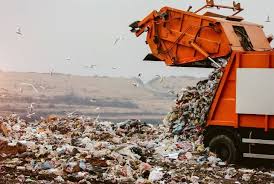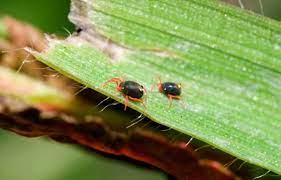Sources of Waste, Health and Environmental Impact of Waste
markets, farms, industrial production, oil prospecting etc. On the basis of source; waste is classified into municipal, industrial or agricultural, hospital etc.
The major sources of municipal waste are residential, commercial, institutional, construction and municipal services. Residential waste, also known as household waste, is generated in homes by various processes.
Examples include human waste (faeces and urine, etc.), food wastes, paper, cardboard, plastics, textiles, leather, yard wastes, wood, glass, metals, ashes, electrical and electronics, batteries, oil, hazardous chemicals, combustion waste, waste water, sewage etc.
Commercial waste originates from stores, hotels and restaurants, pharmacy shops, markets and office buildings in commercial centres. Examples include human waste, paper, plastics, wood, food wastes, glass, metals, e-waste, etc. some of which are hazardous.
Institutional wastes come from schools, hospitals, prisons and other government and corporate establishment premises. Examples are similar to commercial waste. Construction wastes are generated by construction, road repair, renovation, demolition activities. Examples are wood, steel, cement, concrete, dirt etc.
Municipal services wastes are generated in parks, beaches, street cleaning, landscaping, public latrines, and transportation, water and wastewater treatment plants.
Examples include human waste; paper, vegetables, glass, plastics, electrical and electronic rejects, sludge, CO, gaseous pollutants, & used motor oil etc.
Industrial waste are waste from various industrial activities such as light and heavy manufacturing, fabrication, construction, power and chemical plants, petroleum and petrochemicals production and refining.
Examples are human waste, housekeeping wastes, packaging (paper, plastics, glass etc.), food wastes, construction and demolition materials, wastewaters, excess heat, hazardous and non-hazardous chemicals, solvents and other materials, ashes, gaseous waste and noise.
Agricultural wastes are by-products of agricultural processes including farming, fishing, feedlot and animal husbandry, dairy etc. Examples include spoilt food items, agricultural process wastes, hazardous wastes (e.g. pesticides, fertilizers), animal dung, and run-off from feedlot operations, crop residues & animal carcasses.
An emerging type of solid waste that is fast assuming disturbing proportions is the electronic waste commonly known as e-waste. Major sources of e-waste are; equipment such as sodium lamps, fluorescent tubes, VCR/DVD/CD players, drills, lawn mowers, electric saws, coin slot machines, computers, television, radio etc.
These e-products are manufactured with heavy metals and toxic chemicals that pose great threats to the environment and human health.
Health and Environmental Impact of Waste
The health and environmental impacts of waste can be derived from knowledge gained from the preceding discussion on wastes and waste management. Generally, the health and environmental impacts of waste depends on the characteristics and management of the waste.
The characteristics of waste determine whether it should be corrosive, toxic, radioactive, smelly, reactive or ignitable while management method determines human and animal exposure patterns (i.e. degree of contact with human beings and animals).
Corrosive, toxic, radioactive, reactive or ignitable wastes are hazardous and the higher the degree of exposure, the more the likelihood of adverse effect on human health.
Humans are exposed to wastes of different forms; gas, liquid and solid. While he solid waste and liquid waste are visible, most gaseous waste are not, but in many cases more dangerous.

Read Also : An Overview of The Environment and it’s Types
Furthermore, solid waste treatment in the form of open burning, incineration and to some extent composting and land-filling, only change the state of waste from solid to gas or liquid. In the gaseous state, it is emitted into the air polluting the atmosphere while in liquid form; it leaches the ground polluting ground water.
Either way, it becomes more widespread, less concentrated and more exposed to humans. In particular, waste burning gives rise to particulate of different sizes, most common of which are PM2.5 and PM10.
The exact composition of emissions or leachate will vary with what waste is being burnt at any given time, the efficiency of the installation and the pollution control measures in place.
A municipal waste incinerator sometimes contains a great variety of waste contaminated by heavy metals and man-made organic chemicals. During incineration these waste may transform into more toxic forms, thus, posing a greater danger.
The three most important constituents of emissions, in terms of health effects, are particulates, heavy metals and combustion products of man-made chemicals.
The most important of these chemical products of combustion include sulphur dioxide, oxides of nitrogen, over a hundred volatile organic compounds (VOCs), dioxins, polyaromatic hydrocarbons (PAHs), polychlorinated biphenyls (PCBs) and furans.
Health impacts of waste are exposure- related and usually associated with occupational accidents. Persons involved with the collection, loading and transport of waste are often most vulnerable.
Transport of waste (often done using highly polluting trucks) is also an important (and often neglected) cause of exposure to air pollution. People living close to waste dumps are also exposed to the same level of risk as waste collectors.
Impacts from landfills and incinerators are low where there is strict legislation and enforcement on emissions, both landfills and mechanical-biological treatment plants give rise to a considerable impact in the form of respiratory symptoms and odour annoyance.
Findings of several other studies present conflicting results. While some suggest significant associations between waste pollutants and lower male-to-female ratio, twinning, lung cancer, laryngeal cancer, ischemic heart disease, urinary mutagens and promutagens, or blood levels of certain organic compounds and heavy metals, others studies on the other hand, found no significant effects on respiratory symptoms, pulmonary function, twinning, cleft lip and palate, lung cancer, laryngeal cancer and oesophageal cancer.
These results are clear indication that further studies are required to clearly identify the health effects of waste and waste management.
Pest and Disease Control
Pests and diseases are part of the natural environmental system. In this system there is a balance between predators and pests, there is health and illness and ultimately life and death. These are the nature’s way of controlling populations.
Predators prey on pests and other organisms and pests inflict sickness and adverse effects on predators and other organisms. Humans are predators that feed on pests and other organisms while pests cause diseases to man and his domestic animals and cause injuries to crops.
The creatures that we call pests and the organisms that cause disease only become ‘pest’ and ‘diseases causing agents’ when their activities start to damage crops, affect yields and damage our health.
If the process continues unabated, the pest will dominate, but if the predators succeed in eliminating the pests, predators will predominate the environment. The natural environmental system is said to be imbalanced because one population can become dominant over the other.
The aim of natural control is, therefore, to ensure a balance between pest and predator and to keep pests and diseases down to an acceptable level, rarely to eradicate them altogether, as they also have a role to play in the natural ecosystem.
The major environmental diseases which are of interest to environmental health practitioners are those diseases transmitted within the environment. They include diseases caused by chemical pollutants from wastes and other sources as well as biological diseases transmitted in various environmental media, namely air, soil and water.
They include water borne, water washed, water based, water related vector-borne, soil transmitted and air borne diseases. They also include other diseases and injuries contracted directly or indirectly from the environment as a result of poor environmental conditions.
The major diseases include but not limited to Acute encephalitis, Acute poliomyelitis, Anthrax, Cholera, Diphtheria, Dysentery, Food poisoning, Leptospirosis, Malaria, Measles, Meningitis, Meningococcal septicaemia (without meningitis), Mumps, Ophthalmia neonatorum, Paratyphoid fever, Plague, Rabies, Relapsing fever, Rubella, Scarlet fever, Smallpox, Tetanus, Tuberculosis, Typhoid fever, Typhus fever, Viral haemorrhagic fever, Viral hepatitis (Hepatitis A Hepatitis B and Hepatitis C), Whooping cough, Yellow fever, Chagas’ disease, dengue, human African trypanosomiasis, leishmaniasis, lymphatic filariasis, malaria, onchocerciasis, schistosomiasis etc.
Bio-remediation
Bio-remediation can be defined as any process that uses microorganisms or their enzymes to amend a contaminated environment, i.e. return the environment altered by contaminants to its original condition.
The method uses microorganism metabolism to remove pollutants. Bio- remediation can be classified in various ways depending on the source of microorganisms, site of treatment or nature of the bio-remediator.
On the basis of source of micro-remediators (i.e. microbes for remediation), there are ‘intrinsic bio-remediation’ or ‘extrinsic bio-remediation’. It is intrinsic when microorganisms are derived from the site of remediation and extrinsic when they are brought from other sites.
Bio-stimulation occurs when fertilizers are added to increase the bioavailability of resident microorganisms within the medium whether intrinsic or extrinsic. Recent advancements have made extrinsic bio-remediation increasingly successful by providing better matched microbe strains to the medium to enhance the resident microbe population’s ability to break down contaminants.
On the basis of site of treatment, bio- remediation is classified as in situ or ex situ. In situ bio-remediation involves treating contaminated material at the site of contamination, while ex situ involves the removal of contaminated material to be treated elsewhere.
On the basis of nature of bio-remediators, bio- remediation is classified as phyto-remediation (treatment of environmental contamination through the use of plant species that mitigate the environmental problem without the need to excavate the contaminant material and dispose of it elsewhere), bio-venting (an insitu remediation technology that uses microorganisms to biodegrade organic constituents adsorbed in the groundwater), bioleaching (use of microorganisms to extract metals from their ores), land farming (a process that involves periodic turning over (tilting) of the top soil to aerate by mixes, bioreactors (any manufactured or engineered device, facility or system that supports a biologically active environment, e.g. a vessel (commonly cylindrical in shape, ranging in size from litres to cubic metres and often made of stainless steel) in which a chemical process involving organisms or biochemically active substances derived from such organisms takes place.
This process can either be aerobic or anaerobic, compost (organic matter that has been decomposed and recycled as a fertilizer and soil amendment, a key ingredient in organic farming), bio-augmentation (an introduction of a group of natural microbial strains or a genetically engineered variant to treat contaminated soil or water).
The principle is to study the indigenous varieties present in the location to determine if bio-stimulation is possible. If the indigenous variety do not have the metabolic capability to perform the remediation process, exogenous varieties with such sophisticated pathways are introduced.
Bio-augmentation is commonly used in municipal wastewater treatment to restart activated sludge bioreactors. The common microbes involved in bio-augumentation include Bacillus lichenformis, B. thurengensis, B. sterothemophilus, Penicillium spp., P. polymyxa, Aspergillus sp., Flavobacterium, Arthrobacter, Pseudomonas, Streptomyces, Saccaromyces,
Triphoderma, etc.). Activated sludge systems are generally based on the activities of microorganisms like bacteria, protozoa, nematodes, rotifers and fungi that are capable of degrading biodegradable organic matters.
Bio-energy
This is the energy stored in biomass (organic matter). Biomass has been a source of energy for several centuries. The use of firewood and charcoals for domestic energy production is not new or strange to anyone.
However, the advent of biotechnology is fast devising new sources of bio-energy (especially, recycling of biomass wastes for energy production), to complement or replace fossil fuel for industrial production and other areas of energy use.
It is expected that such innovation will make it possible to use bio-energy to provide heat, make fuels, and generate electricity. The various types of bio-energy are:
Bio-power is the use of one or more types of biomass energy to produce electricity.
Bio-heat refers to the use of biomass energy to produce heat.
Bio-fuels are fuels (often for transportation) made from biomass or its derivatives after processing. Examples of commercially available bio-fuels include ethanol, biodiesel and renewable diesel.
Bio-products are commercial or industrial products (other than food or feed) that are composed in whole or in significant part of biomass. Examples of bio-products include soy ink, cellophane, food utensils, and paints made from biomass-based materials.
In summary,environmental biotechnology deals with environmental monitoring, waste management, renewable energy production and remediation of contaminated sites.
Environmental monitoring involves setting of appropriate objectives for effective and timely detection of different environmental pollutants in the different parts of the environment using appropriate indicators.
For example, indicators for the assessment of air quality were identified as particulate matters of varying sizes, greenhouse gases and air borne pathogens. For water quality assessment, appropriate indicators include heavy metal, nutrient concentrations and water borne pathogens.
Apart from knowing the types and sources waste, it is also important to understand its pattern and means of generation and disposal. This helps to determine how best to manage waste to minimize its adverse environmental consequences.
The scope of environmental biotechnology covers environmental monitoring, waste management, environmental management especially the use to bio-remediation to restore polluted environment.
You have also learnt that waste management involves a good knowledge of what is waste and its various types and sources. We outlined the various waste management options and their relative contributions to environmental contamination.
We have particularly shown that involve the application of microorganisms are the most cost-effective and the most environmentally friendly. In the next unit, you will be acquainted with the various methods for achieving most environmentally sound cost- effective waste management.
We also described the emerging technologies in bio-remediation, which is the application of living organisms or substances derived from them in restoring the original integrity of contaminated environment.
Read Also : Definition, Formation and Problems of Groundwater Resources and Management
In this light, it was shown that the different types of bio-remediation depend on the sources of bio-remediators.
Finally, we showed that environmental biotechnology also deals with safe and clean energy production. This involves bio-energy production from biomass. Bio-energy was defined as the process of energy production using living organisms or their derivatives.
The major bio- energy available were identified as bio-power (bio-energy for electricity production), bio-fuel (bio-energy for powering transport facilities) and bio-productions which are products other than food, made using living organisms or substances derived from them.



